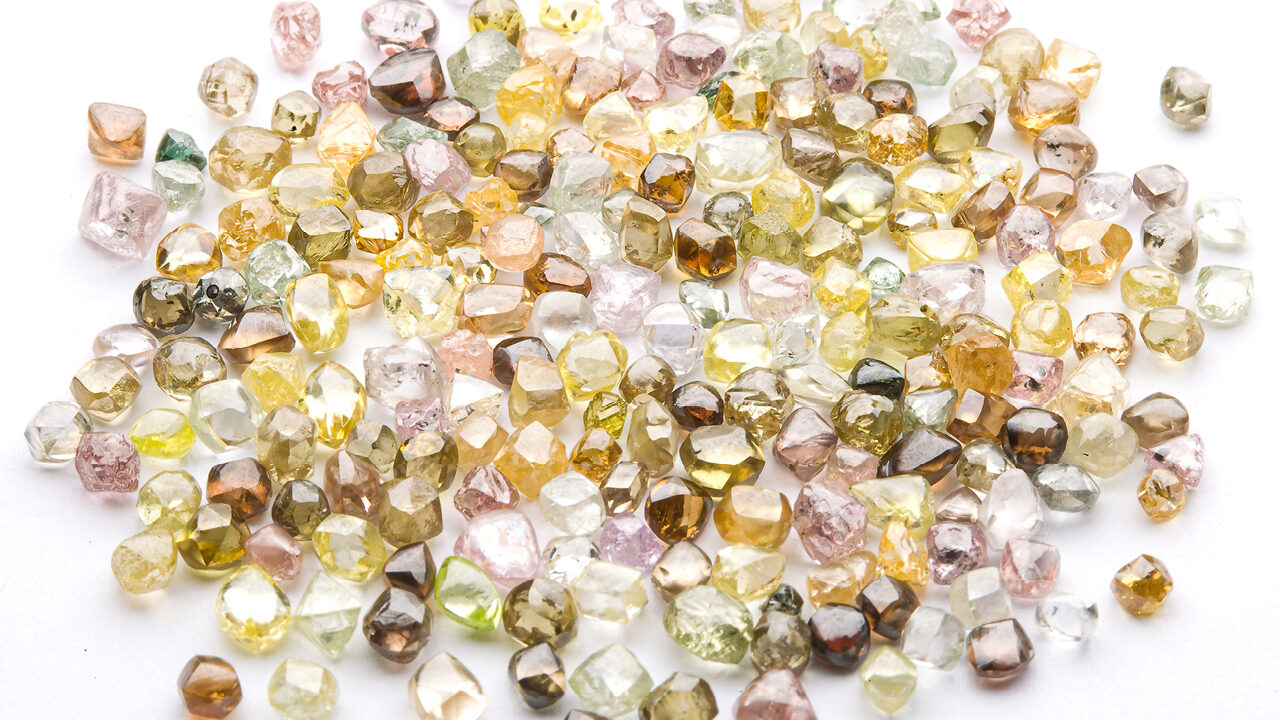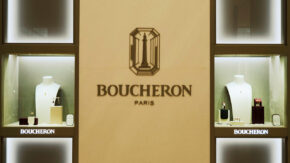Today, natural color diamonds command sky-high prices, but their road to popularity has been rocky.
DATE OF ORIGIN: UNKNOWN
The word “diamond” derives from the Greek adamas, which means “invincible.” In the beginning of the eighth century BCE, the ancient Greek poet Hesiod spoke of adamas, but it wasn’t until 800 years later in the writings of Pliny the Elder that it was associated with diamonds.
Carbon-14 dating has confirmed that the oldest piece of jewelry bearing a diamond ever found dates to the first century BCE. Unearthed in Rome in 1993, the decorated tomb of a young girl contained jewels adorned with precious stones, including a ring with an octahedron shaped diamond believed to have originated from central India.
THE FIRST MINES
From antiquity to the 18th century, India was the sole producer of diamonds. According to two sixth century manuscripts, the value of a diamond was determined by its purity, clarity, color, brilliance, fire, hardness — and above all, rarity. During this time, many colors were discovered, including soft pinks, blues, and browns.
A diamond’s color was closely tied to the caste system, where kings were allowed to wear all the different colors while other castes were restricted to one or two specific ranges of colors. For instance, red for the warriors and knights (the Kshatriyas), Black and gray diamonds could be owned by artisans and peasants (the Shudras), yellow for the landowners and merchants (the Vaishyas), and white for the priests (Brahmins).
STATEMENT-MAKING GEMS
As diamonds made their way through Europe, natural color diamonds were appreciated as the most rare and precious stones. However, just like colorless diamonds, they were reserved solely for men — for kings, nobles, and the wealthy. In the 15th century, it took the boldness of a brave woman to change this.
As the story goes, noblewoman Agnès Sorel showed up at the French court wearing a diamond necklace, which, along with her reported beauty, caught the eye of the French King Charles VII, who made her his
official mistress and gifted her a 5-carat, pink diamond ring. A new trend was launched both for women wearing diamonds and for natural color diamonds being a symbol of beauty and power combined.
WORLDWIDE APPEAL
During the 18th century, more unique colors were discovered on almost every continent. In 1725, new mines opened in Brazil, and a wide range of colors, including beautiful blue and red diamonds, were discovered. In Borneo, the Dutch West Indies Company was given the monopoly of the island’s diamond
production. Many of the diamonds found there were yellow and brown, while exceptional red, blue and green diamonds were also unearthed.
In the 20th century, Russia contributed with gray, brown, olive and purple diamonds; while brown, pink and blue diamonds were discovered in Australia in 1986.
ANTWERP IN THE 20TH CENTURY
The turn of the 20th century marked the beginning of an era of prosperity for superior jewelry, and some of the most talented houses started using natural color diamonds for their Art Nouveau designs, which is exactly what sparked interest in these rare treasures again.
Before World War II, only 10% of engagement rings featured diamonds, but the carefully crafted De Beers campaign in 1948 for “A Diamond Is Forever” drove demand up for colorless diamonds in engagement rings.
Antwerp was buzzing with this demand, keeping all kinds of craftsmen thriving, including traders, polishers and jewelry makers. Among all these thousands of people hard at work in the diamond industry, almost no one was working with or collecting natural color diamonds. The focus was uniquely on colorless diamonds, which caused natural color diamonds to be forgotten for several decades.
However, in the 1960s, a few visionary collectors, among them Arthur Langerman, began trading natural color diamonds and continued to revive interest in color over the ’70s and ’80s. And by 1987, the world took notice again when a circular-cut, 0.95 carat, fancy-purplish-red diamond sold for a record-breaking $880,000 at Christie’s New York.
TODAY’S STARS
Celebrity culture and general access to global media have ushered in a new era for color diamonds. With world-famous personalities wearing unique jewelry and engagement rings featuring natural color diamonds, interest has spiked.
Meanwhile, the closing of the Argyle mine, which has supplied 90% of the world’s pink and a significant amount of brown diamonds, means that scarcity lends another alluring element to the interest in natural color diamonds.
While all diamonds are forever, color diamonds are for connoisseurs and Renaissance people.
Image: Rough color diamonds in a variety of colors and shapes. (Langerman Diamonds)




